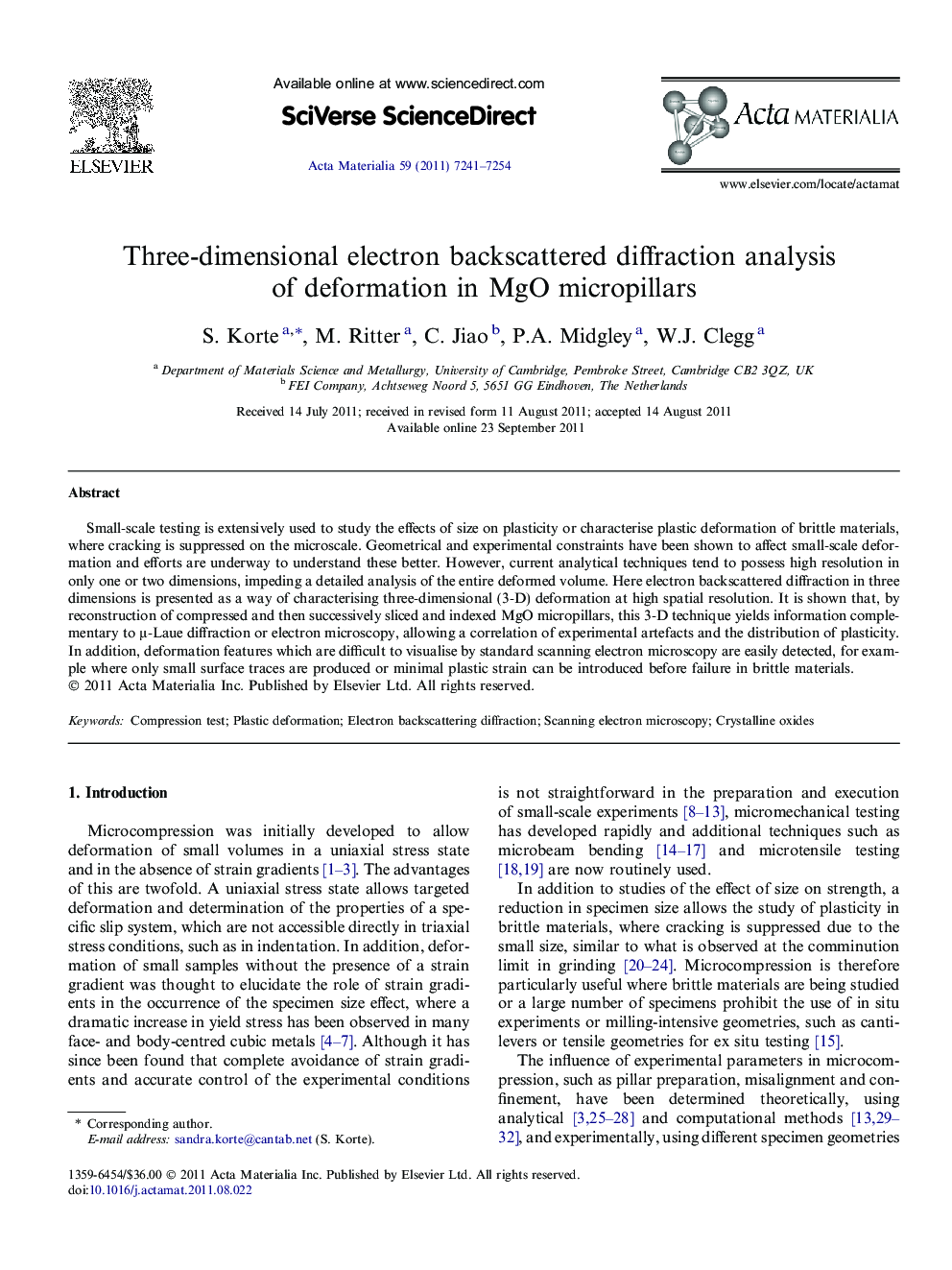| Article ID | Journal | Published Year | Pages | File Type |
|---|---|---|---|---|
| 10620419 | Acta Materialia | 2011 | 14 Pages |
Abstract
Small-scale testing is extensively used to study the effects of size on plasticity or characterise plastic deformation of brittle materials, where cracking is suppressed on the microscale. Geometrical and experimental constraints have been shown to affect small-scale deformation and efforts are underway to understand these better. However, current analytical techniques tend to possess high resolution in only one or two dimensions, impeding a detailed analysis of the entire deformed volume. Here electron backscattered diffraction in three dimensions is presented as a way of characterising three-dimensional (3-D) deformation at high spatial resolution. It is shown that, by reconstruction of compressed and then successively sliced and indexed MgO micropillars, this 3-D technique yields information complementary to μ-Laue diffraction or electron microscopy, allowing a correlation of experimental artefacts and the distribution of plasticity. In addition, deformation features which are difficult to visualise by standard scanning electron microscopy are easily detected, for example where only small surface traces are produced or minimal plastic strain can be introduced before failure in brittle materials.
Keywords
Related Topics
Physical Sciences and Engineering
Materials Science
Ceramics and Composites
Authors
S. Korte, M. Ritter, C. Jiao, P.A. Midgley, W.J. Clegg,
